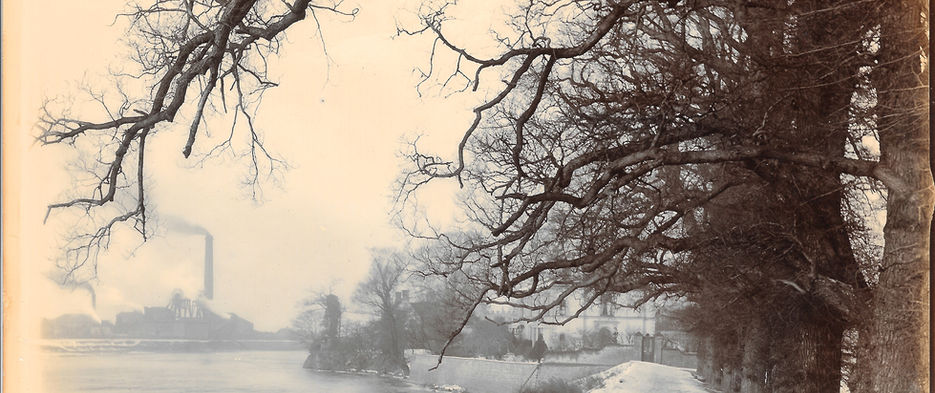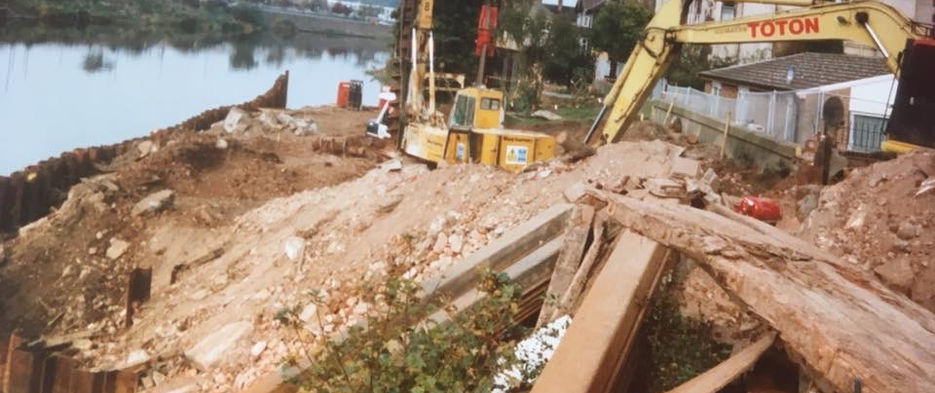
School green

South Wilford Endowed Primary School was founded by Benjamin Carter, Rector at St Wilfrid's Church, through a Trust Deed for the provision of a schoolmaster to be employed for the education of children in Wilford. The original school premises, as endowed by Carter, were built in 1736. In 1886 the old schools were pulled down, and a new building erected, costing £1,060. The white building at 110 Main Road was the schoolmaster’s lodging, with the adjoining buildings being classrooms for both boys and girls.
Following his death in 1732, Carter left what would have amounted to many thousands, or even millions, of pounds in today’s terms, as charity to the people of Wilford. On the 10th of August, 1888, Carter’s Foundation was established to support the school, as well as to provide scholarships for higher or technical training sourced from several properties in central London.
In 1820, the salary of the schoolmaster had been raised to £40 a year, for which he educated 40 poor children, and he had also about 20 pupils who paid fees. Before 1865 a room was added for 25 girls to be taught reading and sewing, and the school mistress was paid £20 a year, which was afterwards raised to £30, and £80 to the schoolmaster. The Governors in 1912 leased from Sir H. Bruce land for an addition to the playground, and also sufficient for school gardens, which may be worked by the children.
Points of Interest
The Bee Bank:
The village regularly suffered from flooding until in the 18th century, experts from Holland built the “B” bank at the river's edge to prevent further flooding to the developing village. It is said by some that the name “B” bank was gained from the many bees that could be seen on the wildflowers that grew on the top of the bank, or alternatively that the “B” bank is in association with the “A” bank on the other side of the river from when it housed the Clifton Colliery and Brickworks. Successive generations have reinforced the bank, with watchmen regularly appointed when flood-water seemed certain to come close to the top. The floods of July and October, 1875, were very disastrous, the former being one of the highest summer floods in recorded history, and the latter being the highest since 1795. The water washed over the Bee Bank flood protection, submerging some cottages in over 6 feet of water. At least seven locals died in the immediate area around the bank-breaking. There was a public subscription for the relief of the sufferers by the flood of 1875 - the surplus was spent on the provision of the public clock in the Old School Building. The bank has since been further reinforced with a bricked wall in 1997. In 1997, the previous lower flood wall and embankment was reinforced and raised with metal 'bees' installed to recognise the quirky nature of the name.
The Grange:
Alongside the Victorian schoolhouses, to the north are two gate posts that signalled the impressive entrance to The Grange, now the site of Grange Close. The Grange was, over the course of many decades, extended into an opulent country house and was home to many notable families. At one time it was the home of Marjorie Bates (1882–1962) who, at a young age, had served with the British Red Cross in Malta, treating the wounded from Gallipoli. Marjorie specialised in oils and pastels, with many of her paintings appearing in galleries across the country, notably her pastels of a mother and child - ‘In the Shawl’. In 1953 she was asked to produce a series of ‘period’ drawings to mark the Coronation of Queen Elizabeth II. One drawing of Barrogill Castle remained a favourite of the Queen Mother. Dame Laura Knight (1877-1970), a relative of Marjorie, also spent time at The Grange. She was among the most successful and popular painters in Britain and only the second woman elected to full membership of the Royal Academy in 1936. Harry Cursham (1859-1941) was an English footballer and cricketer, born at The Grange, who maintains the record for having scored more goals in the F.A Cup competition than any other soccer player in history. The main villa of The Grange was demolished in the mid-1950s to be replaced by Grange Close, a residential road. To the north-east of the main villa house was the 'Orchard Cottage' which, along with additional outhouses and stable blocks, enclosed an orchard for The Grange. This building still stands at 128 Main Road (Grange Close).
Sir Robert Juckes Clifton:
Sir Robert Juckes Clifton, born in 1826 and educated at Christ Church College, Oxford, was the last Baronet of Clifton. He gambled away much of the family’s fortunes and was forced to flee to France to escape his debtors. He eventually came home and followed in the family tradition of politics, standing for parliament and being elected MP for Nottingham in 1861. His financial woes came to an end when coal was discovered beneath his estate and, in 1868, he began building Clifton Colliery. The Toll Bridge was also built by Sir Robert to help transport workers and goods across the Trent. The Colliery and Toll Bridge were both opened in 1870, however, Sir Robert died a year earlier at the age of 42 from typhoid fever and never lived to see either of his successes. He had no heir so, as such, the baronetcy became extinct upon his death.
Clifton Colliery and Wilford Power Station:
Clifton Colliery, opened in 1870, initially supplied coal for the domestic market. The pit thrived, especially when Wilford Power Station became its major customer. In 1947, because of its proximity to the power station and the need to maintain a continuous supply of fuel, Clifton Colliery became the first in the Notts coalfield to be nationalised. Wilford Power Station, also known as Shae Toolbooth, was a coal-fired electricity generating station opened in 1925, situated on the north bank of the River Trent opposite Wilford Village. The plant was extended at least four times increasing the capacity from 31 MW in 1928 to 308.5 MW by 1971. The pit closed in July 1968 but North Wilford Power Station continued to serve the national grid for another decade before it was demolished in 1981, the site being redeveloped as the Riverside Retail Park.
Wilford Through The Wars:
Wilford found itself at the centre of the German targets: Wilford Power Station across the river, the Boots Factories further along the river, the Ordinance Factory towards Ruddington and the Railway running through Wilford. Numerous Air Raid Shelters were installed in 1940 to provide safe protection for local residents. The largest such within Wilford was a Concrete Shelter on the Upper Green, alongside Wilford Crossroads, serving residents in Wilford Village and along Wilford Lane, Ruddington Lane and Clifton Lane. Two more were located on the Village (Lower) Green and on South Wilford Primary School's fields. Brick Shelters were located at Vernon Avenue, Roland Avenue and on Ruddington Lane. On the 8th of May, 1841, 27 bombs were dropped on Wilford during an air raid with more falling into the river. No lives were lost. Several buildings were demolished or damaged including, most notably, the destruction of the Old Post Office at the end of the Village Shop White Cottages on Main Road, nearest the Village Green. A WW2 anti-aircraft battery (53) was manned by the 28th Light Anti-Aircraft Regiment Royal Artillery was installed on the School Green in 1940. The placement formed part of the Nottingham–Derby Gun Zone from December 1940, continuing through the Nottingham Blitz during the night of 8-9th May 1941, and leaving for India in Autumn 1941. There were over 100 German bombers during the Nottingham Blitz with a total of 159 people killed and hundreds injured. Two houses near the corner of Wilford Lane with Loughborough Road, namely 24 and 26, were destroyed as part of the raid. Further losses during WW2 included three adjoining cottages at the Village Green, hit by a German bomb and demolished - only two remain.
Gallery
Oral History

Welcome
#ThanksToYou
Without National Lottery Heritage funding, our Heritage Project would not have gone ahead – and without the players there would be no funding – so we would all like to say a massive THANK YOU to everyone who supports us in this way!

























